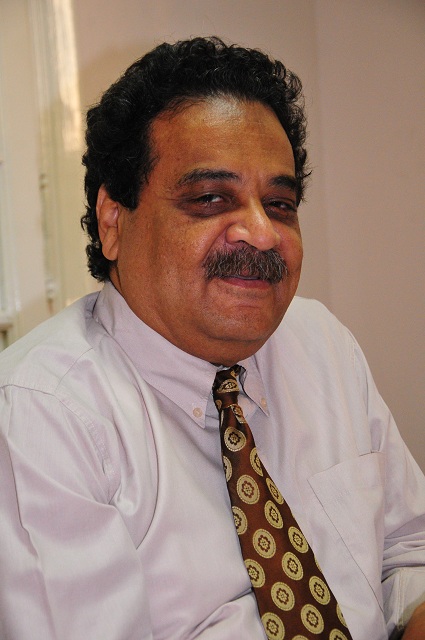 It is not an exaggeration or act of slander to say that the Muslim Brotherhood has always been the fascist alternative to what has been a reactionary regime. In the beginning of the 20th century, it entered into alliances with Egypt’s minor parties against the Wafd, who ruled the country and represented the people’s desire for independence and the drafting of a Constitution.
It is not an exaggeration or act of slander to say that the Muslim Brotherhood has always been the fascist alternative to what has been a reactionary regime. In the beginning of the 20th century, it entered into alliances with Egypt’s minor parties against the Wafd, who ruled the country and represented the people’s desire for independence and the drafting of a Constitution.
During that time, the Muslim Brotherhood for the most part remained on the sidelines, only to be called onto the playing field when the country’s opposition parties could no longer bear to live under the rule of the Wafd, and found themselves unable to seize power by themselves.
In this context, the Free Officer’s Movement led by Gamal Abdel Nasser (who also possessed no popular or legal legitimacy) called on the Muslim Brotherhood to support them in their quest to liquidate their political opposition and dissolve the country’s judiciary. However as soon as the Muslim Brotherhood decided to betray the latter’s ‘revolution’, the two sides broke ranks, and the Muslim Brotherhood was sidelined once again.
Anwar Sadat later made use of the Brotherhood in the same way, calling on them to aid him in his struggle against leftists and resurgent Nasserists.
However no sooner had the two succeeded before they were once again at each other’s throats; the Brotherhood initially being successful in assassinating Sadat, being thwarted shortly after by Hosni Mubarak’s vicious campaign of repression.
The scenario was repeated a third time after the 25 January revolution, which saw the rise of political Islam as the inevitable alternative to what had become a rotten, corrupt regime.
The Islamists, who had not participated in launching the revolution, quickly entered into an alliance with the army, which was careful to make sure that the same reactionary power structures remained in place that had been in existence since 1952.
However what had changed this time around was that the Brotherhood had moved from the sidelines into the spotlight, becoming one of Egypt’s most powerful and active political forces.
The explanation is simple: whenever a nation, any nation, undergoes a crisis, and there exists no one capable of stabilising the country and instituting democracy, fascism will always exist as a possible alternative.
Today, the fascist is our current regime, which has concentrated absolute power in its hands and has resorted to discriminatory and repressive measures as a means of ensuring stability. It has succeeded in reviving the once thought dead practices of the previous regime, creating an environment of political repression and social despair.
This is not the first time Egypt has witnessed an attempt to impose a fascist regime on its citizens. Before the rise of political Islam led by the Muslim Brotherhood, there existed the concept of Arab nationalism, advocated by Nasser.
It behooves us to note that both of these movements started in the 1930s and that despite some of the accomplishments of the pseudo-socialist Arab-nationalism movement, it was for the most part unable to accomplish its goal of growth and development in Egypt while remaining in competition with the country’s Islamists.
Slowly but surely the concept of Arab nationalism began to fade, only to be revived briefly in the 1980s, ironically enough as a result of its alliance with (and later campaign against) the Muslim Brotherhood.
Through generic appeals to populism, the Islamist wing of fascism has been able to flourish and take root in Egypt. Although coming to power just recently, it has always existed as the most obvious alternative to secular fascism since its creation in the 1930s.
Fascism in all its forms is characterised by discrimination and a culture of repression, however who gets targeted by the regime depends on the ideological leanings of those in power. During the era of Arab-nationalism for example, it made no sense to discriminate against Arab Coptic citizens as much as it did to do so against say, Nubians.
However when the ideological underpinnings of those in power began to take a religious tinge, then it became along religious lines that citizens were divided and categorised. For this reason, we have seen a rise in hostile rhetoric directed towards Copts. Based on the previous example I will now review the aspects of the Muslim Brotherhood’s ideology that carry with it the seeds of its own destruction.
The Muslim Brotherhood is an extremist Sunni organisation, whose ideology is rooted in the writings of Sayyid Qutb, Al-Mawdudi and Ibn Timia, whose underpinnings are not shared by other sects of Sunni Islam.
Furthermore, the Muslim Brotherhood’s interpretation of Islam is a very conservative one, which, according to the words of the Brotherhood’s Grand Mufti al-Shaykh Fatullah al-Khatib, does not allow for the construction of Coptic Churches in Egypt.
Because of statement’s like these, even the most conservative and reactionary elements within Egypt’s Coptic community have been unable to accept the notion of a state controlled by the Brotherhood that will deny them equal rights with Muslims.
The Brotherhood’s ideology is also one that promotes conservative social norms that run contrary to the lifestyle enjoyed by many in Egypt’s upper and middle classes. Ironically, it is these elements of society who are most likely to share the Muslim Brotherhood’s desire to preserve the status quo and seek to maintain a reactionary, repressive regime.
If it were not for the Brotherhood’s discrimination against Copts, and its promotion of conservative social norms, many within this sector of society might in fact support the Brotherhood’s claim to power.
However these issues, including the some of the Brotherhood’s statements regarding women, have been cause for alarm for many within the upper echelons of Egyptian society. Calls to marry off girls as young as nine, in addition to certain members advocating polygamy and keeping wives as maids, have alienated those who see such positions as backwards and as a violation of women’s civil rights.
However can one not also interpret the above stated civil and religious divisions in a traditional social context?



